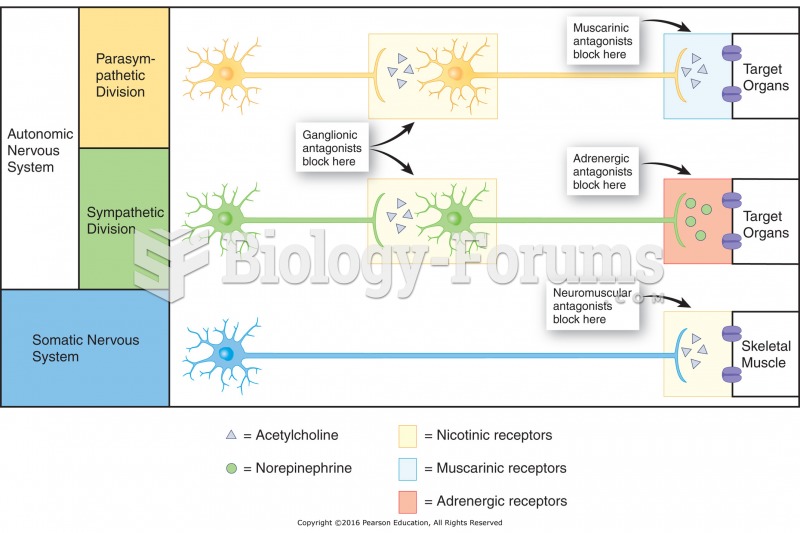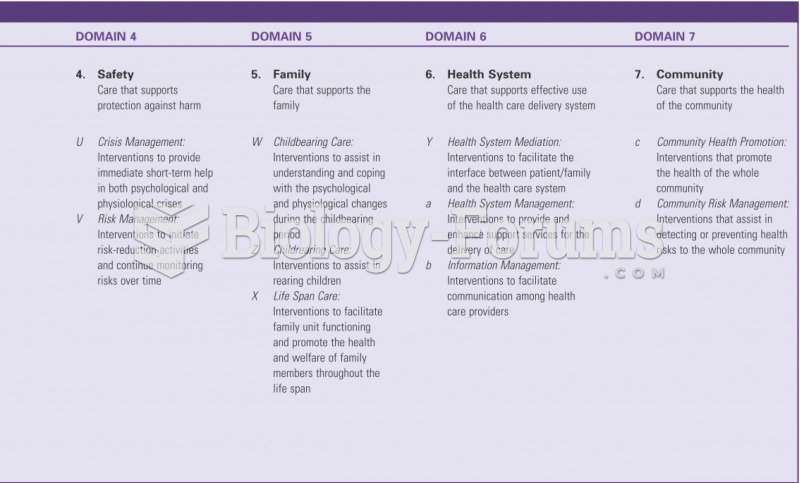|
|
|
To prove that stomach ulcers were caused by bacteria and not by stress, a researcher consumed an entire laboratory beaker full of bacterial culture. After this, he did indeed develop stomach ulcers, and won the Nobel Prize for his discovery.
Eating food that has been cooked with poppy seeds may cause you to fail a drug screening test, because the seeds contain enough opiate alkaloids to register as a positive.
The longest a person has survived after a heart transplant is 24 years.
The training of an anesthesiologist typically requires four years of college, 4 years of medical school, 1 year of internship, and 3 years of residency.
Blastomycosis is often misdiagnosed, resulting in tragic outcomes. It is caused by a fungus living in moist soil, in wooded areas of the United States and Canada. If inhaled, the fungus can cause mild breathing problems that may worsen and cause serious illness and even death.
 Sites of cholinergic antagonist actions. Muscarinic antagonists block cholinergic receptors in the ...
Sites of cholinergic antagonist actions. Muscarinic antagonists block cholinergic receptors in the ...
 Plasma insulin binds to receptors on target cells to enter the cells, which starts actions that lead ...
Plasma insulin binds to receptors on target cells to enter the cells, which starts actions that lead ...




